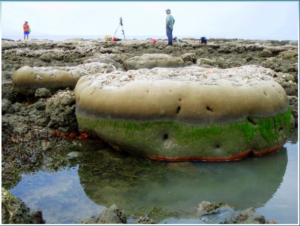
Identifying the fault responsible for Haiti’s massive Jan. 12 earthquake seemed like an open-and-shut case.
After the temblor, the well-known Enriquillo fault was quickly blamed, but new data reveal a more complicated picture. The magnitude-7.0 earthquake involved not one, but three faults, which sent tsunami waves crashing onto shore by an unusual chain of events, according to two studies published today (Oct. 10) in the journal Nature Geoscience.
Despite the massive size of the quake — more than 200,000 people died, more than 1.5 million were left homeless and damage totaled between $9 billion and $14 billion — enough energy remains stored underground to unleash an earthquake that is even larger, said Gavin Hayes, a study team member and geophysicist with the U.S. Geological Survey (USGS) in Golden, Colo., and Synergetics Inc. in Fort Collins, Colo.
“We can’t ever predict an earthquake,” Hayes told OurAmazingPlanet. “But we can use this for hazard assessment and say this region has a high likelihood of a large earthquake, and plan for whatever we’re building in this region.”
Piecing together the puzzle
About 85 percent of the energy from the earthquake came from a previously unknown fault, now called the Léogâne fault, Hayes and his colleagues found. Earthquakes typically occur along faults, which are cracks in the rocky plates of the Earth’s crust.
The Earth’s plates move relative to one another, most of the time at an imperceptibly slow pace — on average plates move between 0.4 and 4 inches (1 and 10 cm) per year, which is about as fast as fingernails grow. In the case of the Haiti quake, scientists expected that the Caribbean and North American plates had slid past one another in an east-west direction to cause the quake.
The earthquake actually occurred at the boundary of the Gonave microplate, which sits between the North American and Caribbean plates, and the Caribbean plate, where numerous faults slipped, including a relatively small slip at the originally blamed Enriquillo fault. Despite the complex web of faults, very little deformation is visible on the surface, one of the studies found.
“If we were to come back in several hundreds’ year time, we wouldn’t find it,” Hayes told OurAmazingPlanet.

Tsunamis surprise
Just as surprising as the complexities of the quake, is that it triggered several small tsunamis. “What’s strange — and Haiti is a good example — is that from a technical perspective, this shouldn’t happen,” said Matthew Hornbach, a team member on the second study and a geophysicist at the University of Texas in Austin.
Strike-slip fault systems, such as the one that runs through Haiti, are not usually associated with tsunamis. Usually, a fault that moves up-and-down will move the seafloor and produce massive waves; strike-slip fault systems slide side-to-side when two plates butt heads. The Haiti quake, however, triggered massive underwater landslides that, along with a small amount of ground motion, made the waves, Hornbach said.

Carol Prentice, study team member with the USGS, explains observations made by her team of geologists to children near Beloc, Haiti who experienced the 2010 earthquake firsthand. The geologists visited Haiti in February and March 2010 to measure surface deformation caused by the Magnitude 7.0 Leogane earthquake. Credit: Dr Rich Briggs, USGS
Globally, 3 percent of tsunamis are caused by slides. In Haiti, slide-triggered tsunamis may be 30-percent more frequent, Hornbach said.
The country’s coastal setting, high sedimentation due to extreme wet and dry seasons dumping material down the mountains, and infrequent earthquakes that would release the coastal build-up of sediment are all causes of the slides. These unstable coasts could set off tsunamis even during smaller earthquakes.
“All of sudden, tsunami warning systems can’t account for these events,” Hornbach said. “This makes it much more difficult to predict.”